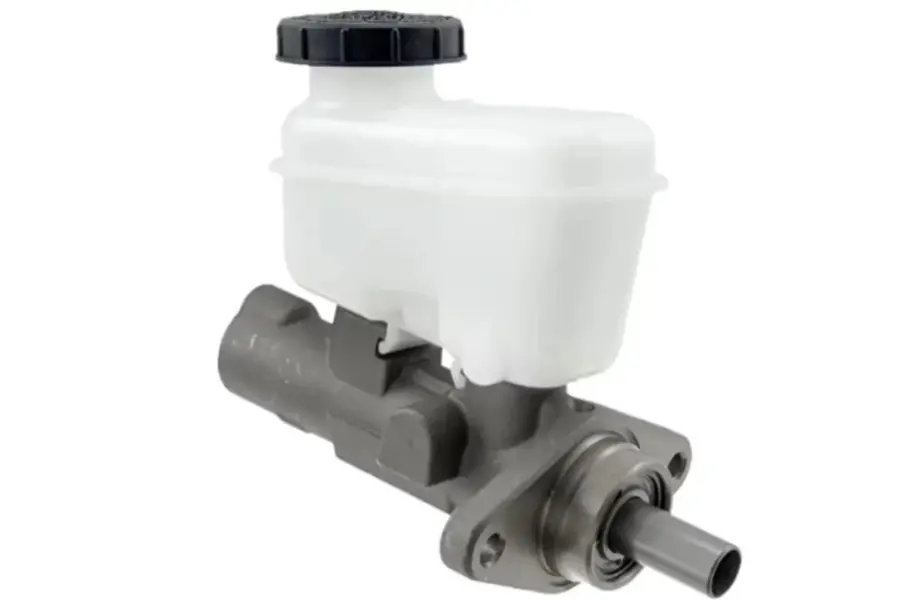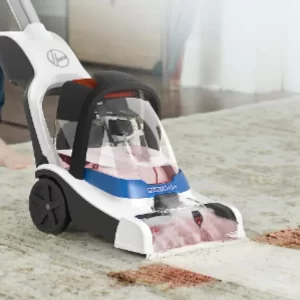Have you ever tried to bench bleed a master cylinder and found that it was a difficult and frustrating process? Bench bleeding a master cylinder is an important step in the brake system’s maintenance that is often overlooked. In this article, we will guide you through the step-by-step process of bench bleeding a master cylinder to ensure that you can do it easily and effectively.
Here are the steps how to bench bleed a master cylinder :
- Ensure that you mount the master cylinder on a vise or another secure surface to make it level and stable.
- Connect suitable fittings and hoses to the outlet ports of the master cylinder.
- Fill the master cylinder reservoir with brake fluid.
- Fully seat and tighten the bleeding tool in one of the outlet ports, and then slowly and steadily depress the master cylinder piston using a screwdriver or other tool.
- This will force the brake fluid out of the bleeding equipment and through the hose into a container.
- Continue depressing the piston until no more air bubbles are visible in the brake fluid. It’s important to exercise patience and precision during this step, which may take several minutes.
- Repeat the same process on the other outlet port of the master cylinder.
- Once you have bled both ports and you can no longer see any air bubbles, remove the hoses and bleed tool.
- After installing the master cylinder in the car, connect the brake lines.
Describes how to bench bleed a master cylinder is an essential step in ensuring the safety and efficiency of a vehicle’s braking system. By carefully and thoroughly completing these steps, you can help ensure that your brakes will function properly and reliably when you need them.
Table of Contents
- Master Cylinder
- How to bench bleed a master cylinder on the car
- How to bench bleed a master cylinder with bleeder screws
- How to bench bleed a master cylinder without a kit
- How to bench bleed a master cylinder without a vice
- How to bench bleed a new master cylinder
- How to bench bleed a ford clutch master cylinder
- How long does it take to bench bleed a master cylinder
- Comclusion
Master Cylinder
If you have master cylinder then you need to know How to Test a Master Cylinder And you need to know if there is a problem with your master cylinder How to Replace a Brake Master Cylinder. And also you need to know How to bleed a master cylinder with a vacuum pump and if you have dyson cylinder then you need to know How to clean dyson cylinder vacuum also you need to know how to bench bleed a master cylinder
How to bench bleed a master cylinder on the car
How to bench bleed a master cylinder on the car is a bit different from bench bleeding a master cylinder off the car. Here are the steps to bench bleed a master cylinder on the car:
- Put the car on a flat surface and engage the parking brake.
- Remove the old master cylinder and install the new one.
- While the brake lines are connected to the master cylinder, they should not be fully tightened.
- Add brake fluid to the master cylinder reservoir.
- Attach the appropriate fittings and hoses to the outlet ports of the master cylinder.
- Using a wrench, loosen the bleed valve on the first brake caliper or wheel cylinder that has been disconnected from the master cylinder. Allow the brake fluid to flow through the hose and into the master cylinder reservoir.
- Close the bleed valve on the first brake caliper or wheel cylinder.
- For each additional brake caliper or wheel cylinder, repeat steps 7-9, starting from the one that is farthest from the master cylinder and moving towards the one that is closest.
- Check the master cylinder reservoir frequently and refill it as necessary to prevent air from entering the system.
- After bleeding all of the brake lines and no more air bubbles are visible in the brake fluid, tighten the brake line connections and bleed screws.
- Verify the brake pedal has the appropriate feel and travel, and carefully test the brakes before driving the car.
If you have dyson cylinder then you need to know how to clean dyson cylinder vacuum and also you need to know how to bench bleed a master cylinder
Bench bleed a master cylinder on the car
Bench bleeding a master cylinder while it is still attached to the car requires a bit more effort than bench bleeding one while it is removed from the car. However, it is still a relatively simple procedure. By carefully and thoroughly completing these steps, you can help ensure that your brakes will function properly and reliably when you need them.
If you buying a master cylinder in your car then you need to know how to bench bleed a master cylinder and also you need to know how to bench bleed a master cylinder
How to bench bleed a master cylinder with bleeder screws
How to bench bleed a master cylinder with bleeder screws? To bench bleed a master cylinder, it must be pre-bled prior to installation in the vehicle. The purpose of bench bleeding is to remove any trapped air inside the master cylinder, which can result in a mushy or ineffective brake pedal while driving the car.
You can also accomplish bench bleeding a master cylinder by using bleeder screws to eliminate any trapped air in the system. This method is similar to the conventional bench bleeding method, but instead, you connect clear plastic tubing directly to the bleeder screws and run it to a container to collect the brake fluid. As a helper carefully presses and releases the master cylinder piston, you crack open the bleeder screw. The brake fluid and air escape into the container until no more air bubbles are visible.
If you have a master cylinder then you need to know how to bench bleed a master cylinder.
How to bench bleed a master cylinder without a kit
Without a kit, bench bleeding a master cylinder is possible with a few basic tools and supplies. Without a kit, follow these procedures how to bench bleed a master cylinder :
- Place the master cylinder in a vise or other stable mounting surface.
- Fresh brake fluid should be added to the master cylinder reservoir.
- Connect the master cylinder’s outlet ports with clear plastic tubing.
- Fill a container with fresh brake fluid with the tubing.
- Slowly and evenly press and release the master cylinder piston with a wooden dowel or similar tool.
- Watch the tubing for air bubbles as you press the piston. Continue pumping the piston for another 10-15 strokes after air bubbles have stopped appearing.
- On the master cylinder, repeat the process for each outlet port.
- After all outlets have been bled, fill the master cylinder reservoir with fresh brake fluid and cap it.
You can easily bench bleed a master cylinder without a kit by using common household tools and materials. It is crucial to ensure that all air bubbles are removed to ensure the brake system functions correctly.
If you have a dyson cylinder vacuum then you need to know how to clean dyson cylinder vacuum and also you need to know how to bench bleed a master cylinder
How to bench bleed a master cylinder without a vice
How to bench bleed a master cylinder on a bench without a vice requires using different methods to keep the cylinder steady before installing it in a vehicle. The goal of this procedure is to eliminate any trapped air bubbles inside the master cylinder to ensure the brake system operates correctly.
Bench bleeding a master cylinder without a vise is similar to the procedure with a vise, but instead of using a vise to hold the master cylinder in place, you can use locking pliers or C-clamps. Once the master cylinder is secure, you should pour fresh brake fluid into the reservoir and connect the outlet ports to clear plastic tubing. Then, you should pump the piston or lever to remove any air bubbles from the system until there are no more visible bubbles in the tubing. This procedure is critical to ensure that the braking system operates correctly and without any air pockets.
How to bench bleed a master cylinder without a vice is an important step in the brake system installation process, and it helps to ensure proper brake performance and safety.
How to bleed a master cylinder with a vacuum pump if you want to know then you can read this and also if you want then you can read about how to bench bleed a master cylinder
How to bench bleed a new master cylinder
How to bench bleed a master cylinder? Installing a braking system requires an essential step of bench bleeding a new master cylinder. Before putting the cylinder in the car, you must release any air that could be there. This step is crucial because air in the master cylinder can lead to a spongy or soft brake pedal, which can impair your ability to brake effectively.
To bench bleed a new master cylinder, you need either a vise or a tool specifically designed for this task. Additionally, you will need two short brake lines or plastic tubes that fit securely into the outlet ports of the master cylinder. Finally, you will require brake fluid to complete the bench bleeding process.
In this article i will show you step by step how to bench bleed a master cylinder keep reading for more information.
Bench bleed a new master cylinder
To prepare for bench bleeding the master cylinder, ensure that it is level and that the brake fluid reservoir is full. Once you have done this, securely mount the master cylinder in a vice or clamp it to a sturdy worktop. The next step is to attach the two short plastic tubes or brake lines to the outlet ports of the master cylinder. After this, insert the other ends of the tubes into the brake fluid reservoir.
To begin bench bleeding the master cylinder, use a screwdriver or similar tool to depress the piston gradually and steadily. This will drive the brake fluid out of the tubes and into the reservoir. Throughout the process, ensure that the reservoir is always full of brake fluid by adding more as needed.
If there are still air bubbles present in the brake fluid flowing out of the tubes, continue depressing the piston. You might need to repeat the process of depressing the piston and adding brake fluid to the reservoir several times until all air bubbles are removed. Once you have removed all the air bubbles, remove the tubes from the master cylinder and proceed to install the cylinder in your vehicle.
It is crucial to properly bench bleed your new master cylinder in order for your braking system to function effectively and deliver reliable stopping force.
If you have master cylinder then you need to know how to bench bleed a master cylinder
How to bench bleed a ford clutch master cylinder
Bench bleeding a Ford clutch master cylinder is similar to bench bleeding a brake master cylinder. Here are the steps to bench bleed a Ford clutch master cylinder:
- Securely mount the clutch master cylinder in a vise or clamp it to a stable workbench, ensuring that it is level and the clutch fluid reservoir is full.
- You need to remove the rubber cap on the master cylinder bleed screw. Place the other end of the tube in a container partially filled with clutch fluid and attach a clear plastic tube to the bleed screw.
- Fill the clutch fluid reservoir to the proper level.
- Slowly depress the master cylinder piston using a screwdriver or similar tool. While holding the piston down, open the bleed screw to allow the fluid to escape.
- Allow the piston to fully return to its original position.
- Repeat steps 4 and 5 until no air bubbles are present in the plastic tube.
- After eliminating all the air bubbles, you should close the bleed screw and remove the plastic tube.
- Install the rubber cap on the bleed screw.
By bench bleeding your Ford clutch master cylinder properly, you can ensure that your clutch system functions as intended and provides consistent engagement and disengagement of the clutch.
If your master cylinder dosen’t work properly then you need to know How to Replace a Brake Master Cylinder and also you need to know how to bench bleed a master cylinder
How long does it take to bench bleed a master cylinder
The time required to bench bleed a master cylinder can vary depending on several factors, such as the type of master cylinder, the amount of air in the system, and the bench bleed technique used.
Generally, bench bleeding a master cylinder can take between 15 to 30 minutes. However, if there is a substantial amount of trapped air in the system or if you encounter any problems, it may take more time than usual.
Bench bleeding a master cylinder requires patience and attention to detail. Rushing the process or not completely removing all air from the system can result in subpar brake effectiveness and potentially hazardous driving conditions.
Hope you will benifit from this arrticle. In this blog post i will show you how to bench bleed a master cylinder.
Comclusion
How to bench bleed a master cylinder? Bench bleeding a master cylinder involves securely mounting the cylinder on a bench vise and connecting a bleeding kit to its outlet ports. Submerging the kit’s hoses in brake fluid, a helper slowly depresses the piston while air bubbles are forced out through the hoses. This process is repeated until no more bubbles are visible and clear fluid flows through the hoses. After bench bleeding, the master cylinder can be installed in the vehicle for further brake system bleeding.









